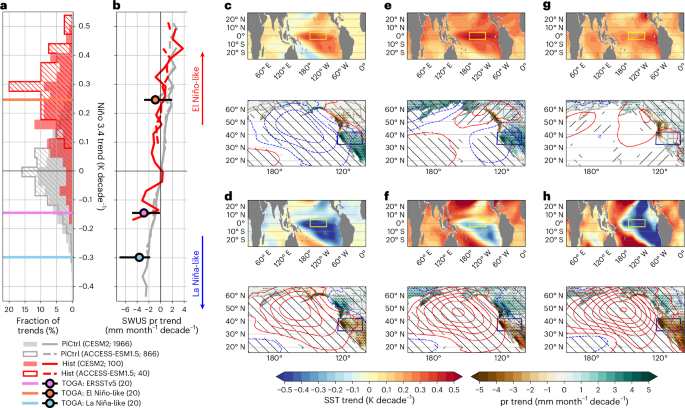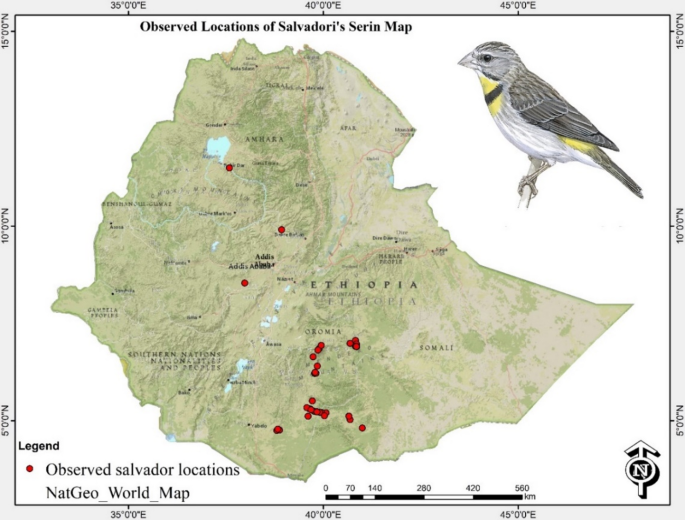Report on Data Integrity in Climate Research for Sustainable Development
Introduction: The Critical Role of Accurate Scientific Data for the Sustainable Development Goals (SDGs)
The successful implementation of the United Nations Sustainable Development Goals (SDGs) is fundamentally dependent on accurate, reliable, and clearly communicated scientific research. This is particularly true for goals related to environmental stability and climate change. This report details a series of corrections to a key climate science article, underscoring the importance of data integrity in research that informs global efforts towards:
- SDG 6 (Clean Water and Sanitation): Understanding the drivers of drought is essential for managing water resources effectively.
- SDG 13 (Climate Action): Precise data on climate drivers, such as aerosols and ocean warming, is critical for developing effective climate mitigation and adaptation strategies.
- SDG 15 (Life on Land): The impact of drought on terrestrial ecosystems requires accurate modeling to protect biodiversity and land resources.
- SDG 17 (Partnerships for the Goals): The scientific process, including peer review and correction, represents a vital partnership that ensures policymakers have access to the highest quality information.
Subject of Review: Correction to Nature Geoscience Article on US Drought
This report addresses a correction notice issued for the article “Recent southwestern US drought exacerbated by anthropogenic aerosols and tropical ocean warming,” published in Nature Geoscience (https://doi.org/10.108/s41561-025-01728-x). The corrections pertain to graphical representations of data in the initial publication. Rectifying these errors is crucial to ensure the study’s conclusions can be reliably used to support policies aimed at achieving the aforementioned SDGs.
Summary of Necessary Corrections
A comprehensive review of the initially published article identified several errors within its figures. The following corrections have been implemented in the official HTML and PDF versions of the article to ensure scientific accuracy and clarity, thereby strengthening its contribution to SDG-related knowledge.
-
Corrections to Figure 2: The original figure contained graphical errors that could impede the correct interpretation of climate model outputs.
- Panel headings were missing, making the figure’s components difficult to identify.
- The hatching within the maps was reversed, which could lead to a misinterpretation of the spatial data presented.
-
Corrections to Figure 4 Panel Headings: Multiple panel headings in Figure 4 required revision to accurately describe the data shown. These detailed corrections are vital for the precise understanding of the climate forcing agents discussed.
- Panel 4a: The heading was corrected from “SST fixed (10)” to “fixed SST (RF-only; 10)”.
- Panel 4c: The heading reference was corrected from “(20)” to “(10)”.
- Panel 4d: The heading was revised from “El Niño-like only tropical SST-forced psl and pr (20)” to “El Niño-like tropical SST-forced psl and pr (ElNiño-like-only; 20)”.
- Panel 4e: The term “RF-forced” was clarified to “radiative forcing”.
- Panel 4f: The heading reference was corrected from “(20)” to “2k-only; 20)”.
Conclusion: Upholding Scientific Integrity for Global Sustainability
The issuance of these corrections exemplifies the scientific community’s commitment to accuracy. By ensuring that graphical data is presented correctly, the research findings provide a more robust foundation for policymakers and stakeholders working on climate action (SDG 13) and water security (SDG 6). This process reinforces the reliability of scientific partnerships (SDG 17) in the collective pursuit of a sustainable and resilient future.
Analysis of the Article in Relation to Sustainable Development Goals
1. Which SDGs are addressed or connected to the issues highlighted in the article?
Based on a thorough analysis of the provided article, no Sustainable Development Goals (SDGs) are addressed or connected to the issues discussed. The text is a “Publisher Correction” for a scientific paper published in Nature Geoscience.
- The entire content focuses on rectifying errors in the original publication. Specifically, it details corrections made to figures and their corresponding headings.
- For example, the article states, “panel headings were missing from Fig. 2 and the hatching in the maps was reversed,” and lists several other specific typographical errors in the headings for Fig. 4.
- The article does not discuss any substantive topics such as environmental degradation, social inequality, economic development, climate change impacts, or any other theme central to the SDGs. The content is purely procedural and relates to academic publishing standards and scientific accuracy.
2. What specific targets under those SDGs can be identified based on the article’s content?
Since no SDGs are addressed in the article, it is not possible to identify any specific targets. The content does not provide any information or context that aligns with the objectives outlined in the 169 targets of the Sustainable Development Goals.
3. Are there any indicators mentioned or implied in the article that can be used to measure progress towards the identified targets?
As no SDGs or targets could be identified from the article’s content, no corresponding indicators can be mentioned or implied. The text is confined to listing corrections and does not contain data, statistics, or qualitative information that could serve as an indicator for measuring progress on any sustainable development target.
4. SDGs, Targets, and Indicators Table
| SDGs | Targets | Indicators |
|---|---|---|
| Not Applicable | Not Applicable | Not Applicable |
| Explanation: The provided article is a correction notice for a scientific paper. Its content is limited to detailing typographical and formatting errors in figures and does not discuss any substantive issues related to the Sustainable Development Goals. Therefore, no relevant SDGs, targets, or indicators could be identified. | ||
Source: nature.com







